How Mackensen's 1st Panzer Army Escaped the Caucasian Cauldron
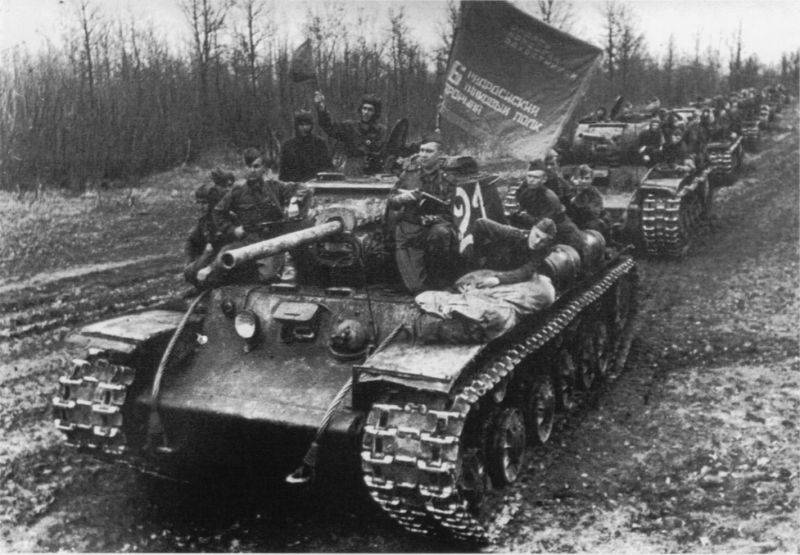
Tanks KV-1S of the 6th separate tank regiment of a breakthrough before the march. North Caucasian front. 1943
The command of the Transcaucasian Front and the Northern Group of Forces, despite the advantage on the ground and in the air, could not organize the pursuit, encirclement and destruction of the German 1st Panzer Army.
Withdrawal of the German North Caucasian group
In the Caucasus, according to the large-scale idea of the Soviet Headquarters (How the Soviet Headquarters prepared the Caucasian cauldron), the Northern Group of the Transcaucasian Front (ZF) Maslennikov delivered the main blow on his right flank with the forces of the 44th Army of General Khomenko (8 rifle divisions and 4 brigades) and the 58th Army of General Melnik (4 rifle divisions and 3 brigades).
Soviet troops were advancing in the Mozdok direction. At the same time, the 4th Kuban and 5th Don Guards Cavalry Corps, advancing even more to the right on Vorontsovo-Aleksandrovskoye, were supposed to go behind enemy lines and capture the crossings across the Kuma River. The tank group of General Lobanov was also located here - 3 tank brigades, a regiment, a separate tank battalion (130 tanks and armored vehicles) and 2 anti-tank regiments.
On the left flank, the 9th Army of General Koroteev (the 11th Rifle Corps, consisting of three brigades, 2 rifle divisions and 3 brigades) and the 37th Army of Kozlov (3 divisions) advanced on Nalchik. Filippov's tank group was also located here - 3 tank and 1 rifle brigades, 2 tank battalions and 2 anti-tank regiments (more than 120 tanks).
From the air, the offensive was supported by the 4th Air Army (5 air divisions), which attacked enemy communications. First of all, railway junctions, stations and bridges of the main line Mineralnye Vody - Armavir - Tikhoretsk - Rostov were attacked.
After the defeat of the Mozdok grouping of the enemy, a general offensive of the Northern Group of the Polar Front was to follow in order to prevent the Germans from withdrawing to a new defensive line and defeating the 1st Tank Army of General von Mackensen (2 tank and 4 infantry divisions).

However, the German command did not wait until the Caucasian mousetrap slammed shut. On New Year's Eve, hiding behind the rearguards, the Nazis began a phased withdrawal of troops from the Terek in the general direction of Voroshilovsk (Stavropol).
The Germans planned to connect the flanks of the 1st and 4th tank armies in the Manych valley and create a solid front line.
On January 1, 1943, the Jungshults battle group (Cossack cavalry regiment) left Elista and joined the retreating units of the 3rd Panzer Division of General Westhofen. The Nazis retreated calmly and in perfect order to the first intermediate line along the line of the Kuma River. The 49th mountain corps of General Konrad left the Elbrus region.
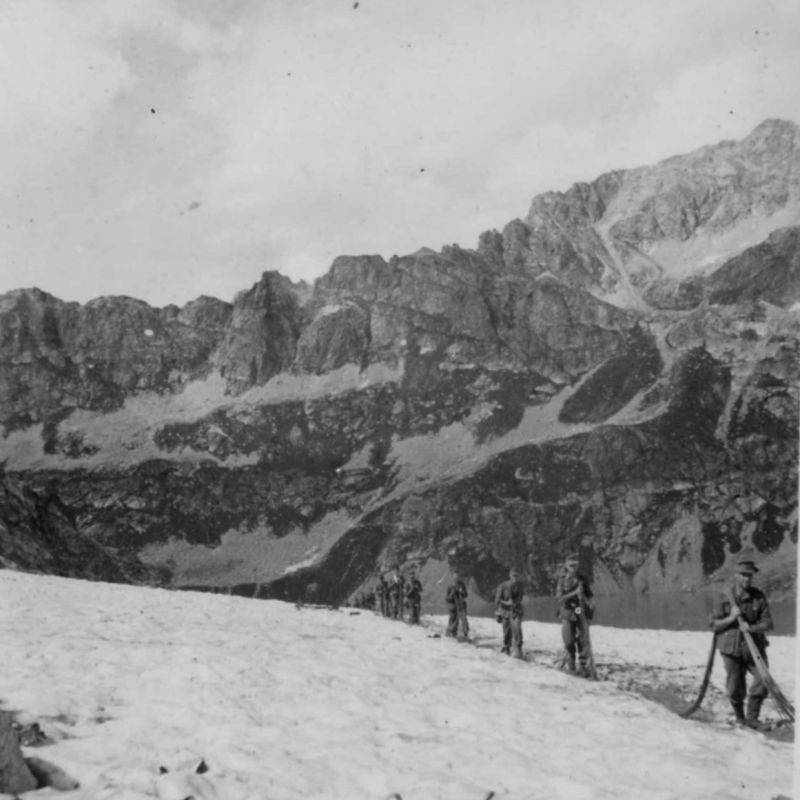
Jaegers of the 1st mountain division of the Wehrmacht in the Caucasus are on the slope of the mountain. Winter 1942–1943
Pursuit of the enemy
Only on the third day did the command of the Northern Group discover that the main enemy forces had left their positions. The pursuit of the enemy immediately revealed a number of problems.
As a result, already on the first day of the persecution, the units mixed up. The headquarters did not know the exact location and condition of their troops. The 58th Army lagged behind its neighbors and found itself, as it were, in the second echelon. The 5th Don Cavalry Corps and tanks were unable to get ahead of the infantry.
The front command tried to restore order, but without much success.
Thus, it was not possible to catch up, surround and defeat the enemy. Fortunately, the Germans and Romanians themselves were in a hurry, fearing to be surrounded.
However, the ZF troops liberated our lands.
For three days, the troops of the Northern Group advanced 25-60 kilometers, liberated Nalchik, Mozdok and Prokhladny. There was a steppe in front of the right flank of Maslennikov's group, there were two cavalry corps and a tank group, but it was not possible to use them wisely.
Army group headquarters and army headquarters simply lost contact with the troops and did not know where they were. For example, on January 5, communication with the 58th Army was lost. There was no connection with the 44th Army. For two days they could not contact the 5th Cavalry Corps and Lobanov's tank group. There was also no direct connection with Moscow.
As a result, reconnaissance did not detect the enemy's withdrawal in time, and cavalry and tanks could not be properly used. Confusion began, the connection between the headquarters and the troops was lost. The 58th Army, during the pursuit, found itself in the rear of other armies. The Germans were not overtaken.
According to Shtemenko, the ZF command did not accurately determine the situation, the main attention was paid to the Northern Group, where everything came down to frontal pursuit and pushing the enemy out.
Great prospects were before the Black Sea Group of Forces, but there the command did not undertake anything significant. Therefore, it did not work to intercept the enemy's withdrawal routes, to create a large North Caucasian cauldron.
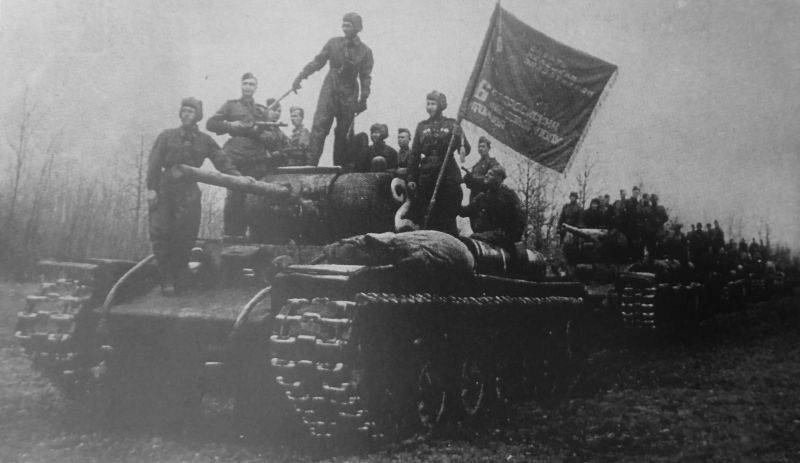
Tanks KV-1S of the 6th Guards Separate Tank Regiment of the breakthrough before the march
Offensive adjustment
On January 4, 1943, Supreme Commander-in-Chief Stalin called the headquarters of the Polar Front and personally dictated a directive for the commander.
The northern group turned into a reserve group, it was given the task not to displace the enemy, but to cover its flanks with mobile groups, reaching rear communications. The center of gravity of the operations of the Polar Front shifted to the area of the Black Sea group. She was supposed to break through to Tikhoretskaya and prevent the enemy from taking out heavy weapons to the west. Also occupy Bataysk and Azov, go to Rostov from the east, creating a North Caucasian cauldron. The Black Sea group was supposed to launch an offensive no later than the 12th.
On January 7, the General Staff analyzed the actions of the Northern Group and presented a plan for further actions of the Maslennikov group. The 9th Army was to develop an offensive against Georgievsk, Mineralnye Vody and Nevinnomyssk. On the left wing, have minimal forces, fettering, so as not to push the enemy out of the foothills of the Main Caucasian Range. Two cavalry corps, two tank groups and the 62nd rifle brigade were combined into a cavalry-mechanized group of General Kirichenko. She had to bypass the positions of the enemy on the far right wing.
On the night of January 8, Stalin again dictated a telegram to Maslennikov and Tyulenev and demanded that communications be established among the troops and that the General Staff be regularly informed about the state of affairs at the front. In the following days, the situation with control and communications improved somewhat.
The troops of the Northern Group reached the Kum River. There they were held back for 4 days by the German rearguards. Neither to cover the flanks, nor to reach the rear, nor to break through the front, to prevent an organized withdrawal of the Wehrmacht, despite the complete superiority in the air and on the ground, failed. On the right flank, the cavalry lagged even behind our infantry. The horse train was exhausted and could not withstand crossings of more than 20–25 km per day.
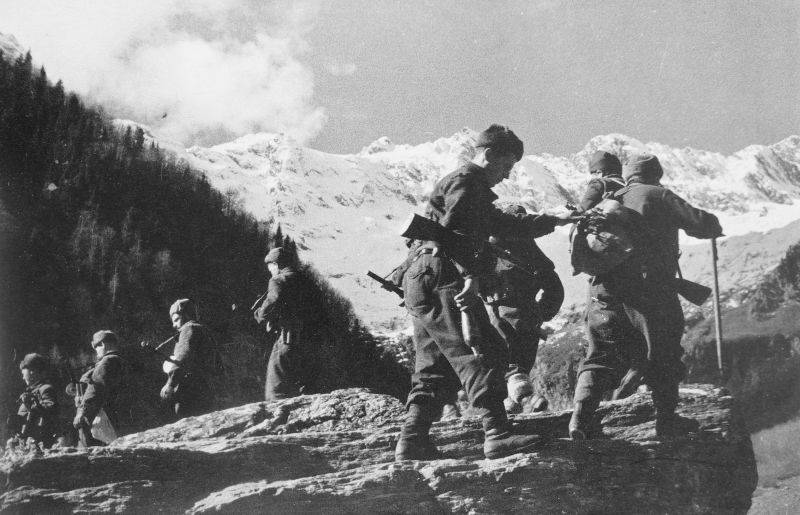
Soviet mountain shooters on the march in the Caucasus mountains
The problem of stocks, supply
Both opposing sides were suffering from a stockpile problem. The Germans, who stopped the offensive in the Caucasus in November 1942, accumulated large stocks of weapons, equipment, ammunition and various property. Now many commanders were sorry to leave even part of the reserves. It also required more time to withdraw to new positions due to the evacuation of supplies.
On the one hand, without a maneuver to withdraw the army, disaster threatened. On the other hand, it was necessary to ensure the removal of accumulated weapons, equipment, ammunition, fuel, provisions, etc. This slowed down the pace of withdrawal of the 1st Panzer Army. Part of the equipment, property had to be destroyed and even simply abandoned.
In the Red Army, it was the other way around.
There were few stocks in the warehouses of the Northern Group before the start of the offensive. The remote and inaccessible position of our troops affected. The main supply line went along the Caspian Sea, then by transport, often horse-drawn, to the mountains. There were few roads, and the available ones were poor.
There were also shortcomings in rear management. In particular, Transcaucasia during this period became a real arsenal of our army. The economies of the three Transcaucasian republics switched to war footing. One of the Lend-Lease routes went through Persia and the South Caucasus. In particular, aircraft, cars, shells, fuel, etc.
When our troops went forward and moved away 100 km from their bases, the situation deteriorated significantly. There was a serious crisis in the supply of ammunition and food. There was no fuel for the tanks.
For example, the 221st Tank Regiment as part of the 5th Guards Cavalry Corps was inactive for three days due to lack of fuel. Without provisions, fodder, shells and fuel, our mobile formations were marking time. Plus the lack of decisive commanders. In particular, Kirichenko was distinguished by extreme caution, his headquarters broke away from his troops by 40–60 km.
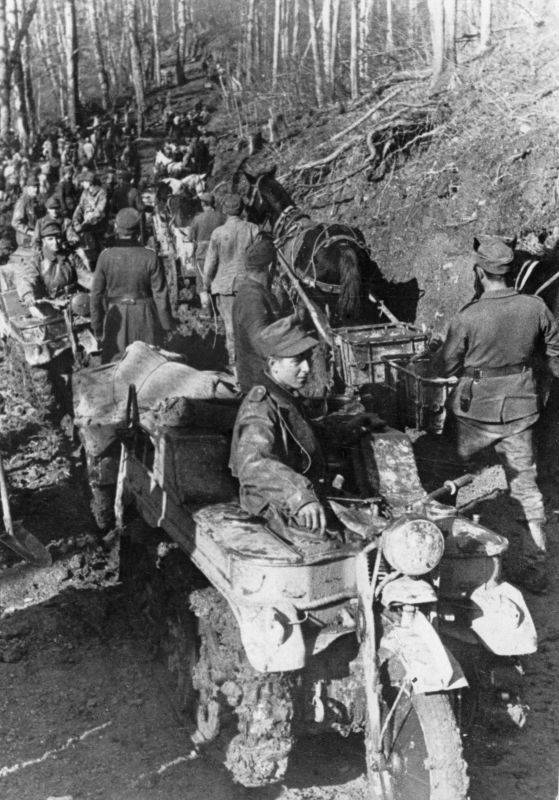
German units on a mountain road in the Northwestern Caucasus. The frame shows half-tracked motorcycles Sd. Kfz. 2 (Kettenkrad HK 101).
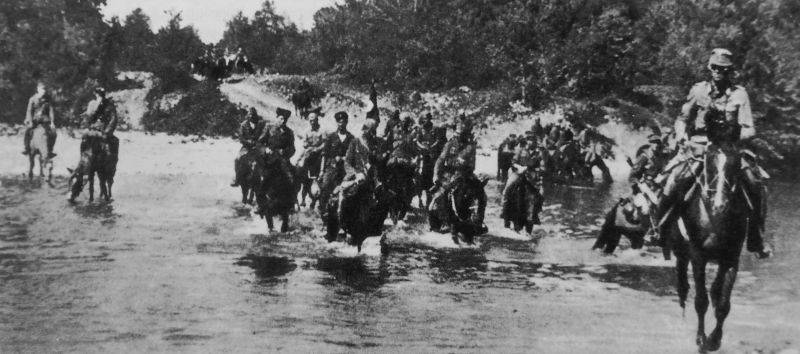
The cavalry unit of the German army, recruited from collaborators, crosses the river in the North Caucasus. On the right in the foreground is the unit commander, Rittmeister of the Wehrmacht. The photograph was published in one of the German newspapers in October 1942 with the caption: “A squadron of volunteer Cossacks crosses a mountain river in the Caucasus. Fighting against the Bolshevik enslavers under the leadership of a German captain (rittmeister), they feel in their element.
Offensive development
However, despite all the problems, our troops were advancing.
On January 11, 1943, the Soviet armies liberated Kislovodsk, Essentuki, Pyatigorsk, Georgievsk, Mineralnye Vody and Budennovsk. Our troops developed an offensive against Nevinnomyssk, Cherkessk and Stavropol. January 12, 1943 Ordzhonikidzevsky region was renamed Stavropol, and the city of Voroshilovsk - Stavropol.
On January 14, 1943, the German army retreated to a new defensive line along the Kalaus-Petrovskoye-Cherkessk river line. Our troops reached him two days later.
Again, the Headquarters pointed out to the commander of the ZF Tyulenev and Maslennikov that the actions of their troops did not ensure the fulfillment of the task of encircling and destroying the enemy. The stake demanded decisive action. Maslennikov was supposed to organize a strike on Tikhoretsk with the forces of three armies. The cavalry-mechanized group should be used for active pursuit and interception of enemy communications to the north and northwest. Moreover, there was no front from Petrovsky to Proletarskaya.
But nothing happened.
The Red Army could not immediately reorganize from a defensive position to more complex offensive operations. The simple pursuit of the German army continued. On January 18, the troops of the 37th Army liberated Cherkessk, a day later, units of the 9th Army were in an important railway junction - Nevinnomyssk. The troops of the 44th Army reached Stavropol, which they liberated on January 21st. On January 23, KMG Kirichenko entered the area south of Salsk, where he joined up with units of the 28th Army of the Southern Front.
On January 24, the left wing of the Northern Group liberated Armavir and the Labinskaya station. The northern group reached the distant approaches to Tikhoretskaya. On the same day, the Northern Group of Forces of the Transcaucasian Front was transformed into the North Caucasian Front.
The German 1st Panzer Army occupied the line of Krasny Manych, Belaya Clay and Armavir.
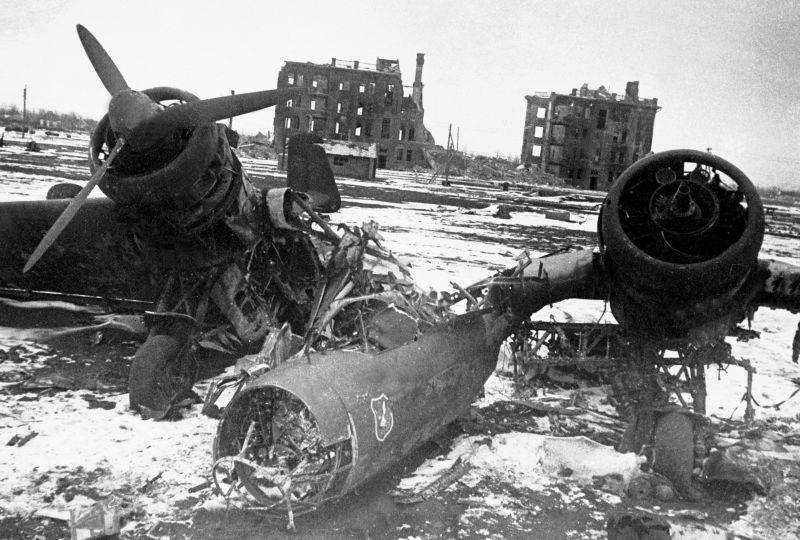
German reconnaissance aircraft Dornier Do.17P, destroyed at the Armavir airfield. On the fuselage of the aircraft, the emblem of the 1st night reconnaissance squadron of the Luftwaffe is visible.
As a result, the Germans were able to break away from our troops, held them back with rear guards and moved from one line of defense to another. It was not possible to encircle and destroy the enemy's 1st Panzer Army.
The vast territory of the North Caucasus was liberated.
It is worth noting that the "Stalingrad Fortress" played a big role in saving the German North Caucasian group. The encircled German 6th Army of Paulus had a serious impact on the Don and Caucasian directions.
The German headquarters has not yet abandoned plans to capture the Caucasus.
Hitler wanted to create a front south of the Don, while retaining the Donbass, the Krasnodar Territory and the Maykop oil. As a last resort, he demanded to maintain a foothold in the Kuban, from which it would be possible to re-launch an offensive in the Caucasus.
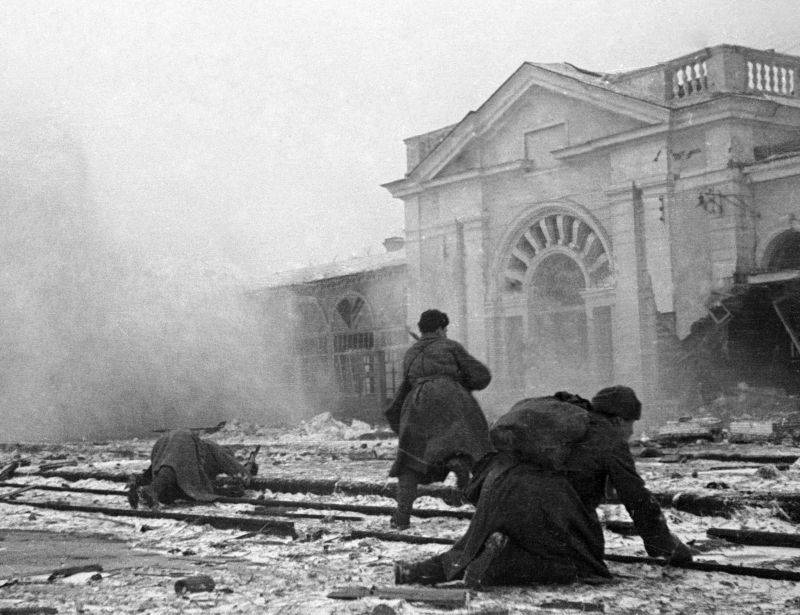
Soviet soldiers are fighting the German invaders at the Voroshilovsk (Stavropol) railway station. January 21, 1943
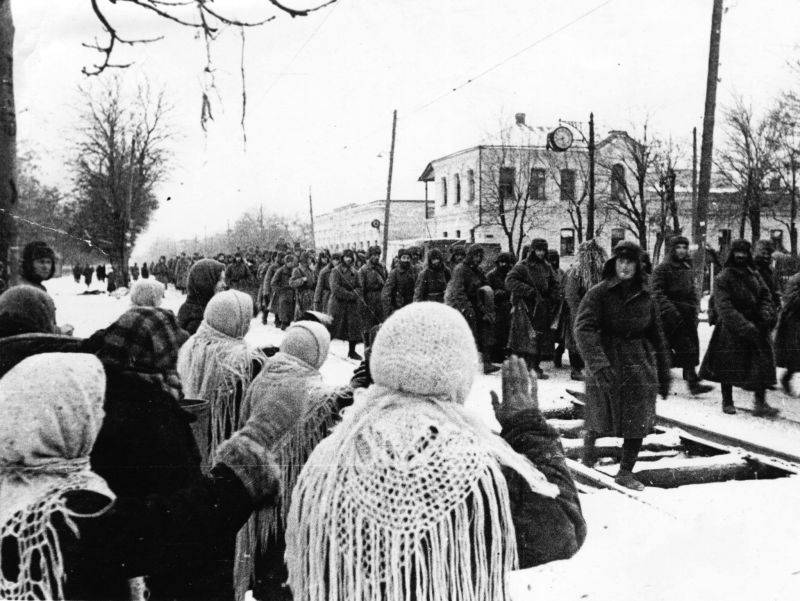
Residents of Stavropol meet Soviet soldiers-liberators
- Alexander Samsonov
- https://ru.wikipedia.org/, http://waralbum.ru/
Information